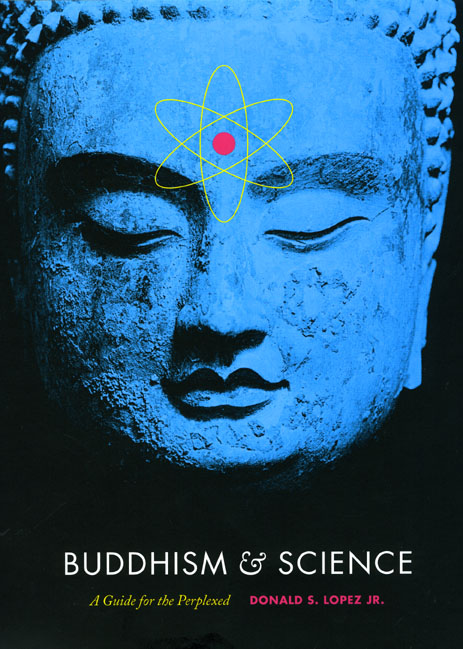Six Things You May Not Know about Buddhism and Science
 In honor of the publication this month of Buddhism and Science: A Guide for the Perplexed, author Donald S. Lopez Jr. distills his book into this handy guide.
In honor of the publication this month of Buddhism and Science: A Guide for the Perplexed, author Donald S. Lopez Jr. distills his book into this handy guide.
Six Things You May Not Know about Buddhism and Science
1. Although the statement is widely attributed to him, Albert Einstein never said, “The religion of the future will be a cosmic religion. It should transcend a personal God and avoid dogmas and theology. Covering both the natural and the spiritual, it should be based on a religious sense arising from the experience of all things, natural and spiritual as a meaningful unity. If there is any religion that would cope with modern scientific needs, it would be Buddhism.” Einstein appears to have occasionally made passing references to the Buddha in conversation. Yet something compelled someone to concoct this statement and attribute it to Einstein, the Buddha of the Modern Age. And since the time when Einstein didn’t say this, intimations of deep connections between Buddhism and science have continued, right up until today.
2. Claims for (and against) the compatibility of Buddhism and science originated in the encounter between Buddhists and Christian missionaries to Asia. One of the first such encounters occurred in 1552, when the Jesuit missionary Francis Xavier criticized the Japanese for not knowing that the sun orbits the earth.
3. The traditional Buddhist cosmography describes Mount Meru, a vast mountain located to the north of our continent. It was on the summit of this mountain that the Buddha set forth his system of metaphysics. In a debate with a Methodist minister in 1873, a Sri Lankan monk argued that such a mountain does exist, despite the fact that it does not appear on European maps. His proof? Compasses always point north.
4. Although hailed in Victorian Europe for its rejection of the Indian caste system and its championing of the spiritual potential of all social classes, Buddhism also played a role in the science of race during the late nineteenth and early twentieth centuries. In 1914, the Sinhalese Buddhist Anagarika Dharmapala described the Buddha as “the great Aryan Savior,” while explaining that “the life of the Nazarene Jew was not of cosmic usefulness.” In 1937, the Chinese Buddhist monk Taixu wrote a letter to Adolf Hitler, recommending Buddhism as the ideal religion for the Aryan race.
5. In 1938, the Tibetan intellectual Gendun Chopel wrote a newspaper article explaining to his compatriots that the world is round, rather than flat, chiding his fellow Tibetans for being the last Buddhists to deny the planet’s true shape. He explained that the Buddha himself knew that the world is round but withheld this fact from his disciples because they would not have believed it.
6. Some neuroscientists have made wide-ranging claims for the benefits of Buddhist meditation. Two of the problems faced by such studies are the meaning of “meditation” in this context and the extent to which it is “Buddhist.” Another is that the predicted benefits of meditation in laboratory studies (including weight loss, lowering blood pressure, lowering cholesterol, and reducing substance abuse) hardly correspond to the traditional goals of Buddhist meditation: liberation from suffering and rebirth for all beings in the universe.
For more from Donald S. Lopez Jr., visit our page dedicated to his books.